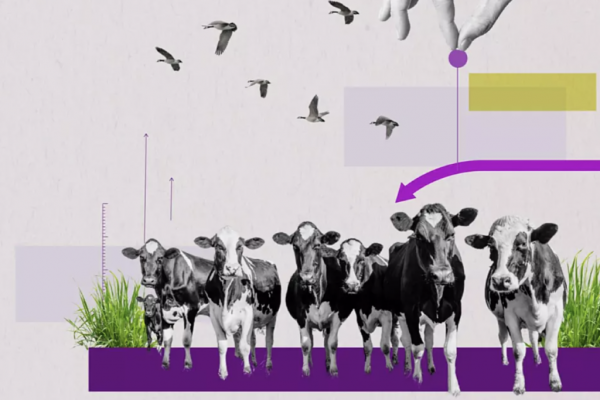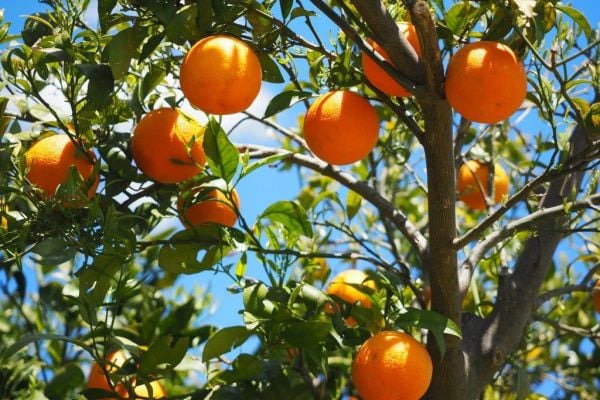Ukraine's on-off Black Sea grain deal has made the nearest port of Constanta in neighbouring Romania a key alternative that is set for volumes doubling its record years and months of delays with a domestic crop looming, industry experts and traders said.
Ukraine, one of the world's leading grain and oilseed exporters, saw its Black Sea ports blocked after Russia's invasion in February 2022.
Limited Access
It regained limited access to three of its ports under a deal brokered last July by the United Nations and Turkey, which has been extended three times but is due to expire this month.
With no new ships registered under the deal since June 26, and a further extension uncertain, Ukrainian officials have said transit via Romania's Black Sea port of Constanta will be critically important.
Constanta
Since the start of the war, Constanta has handled a third of Ukraine's total grain exports of just under 49 million tonnes.
Romanian port operators shipped 8.6 million tonnes last year, and 6.3 million tonnes in the first five months of 2023, the Constanta Port authority told Reuters.
The port handled 12.17 million tonnes of grains overall in the first five months, a 21% jump on the year.
'New Traffic Award'
"There are premises that Constanta Port will see a new traffic record," the authority said.
At the start of the war, around 700 rusty wagons were blocking the tracks in the port in Constanta, and rail works were stalled.
Transit Routes
Only last year, Romania reopened or rehabilitated 47 cargo and passenger rail links with Ukraine and neighbouring Moldova and works are ongoing.
Transit routes by rail and barge from Ukraine's Danube ports have matured over 16 months of the war, port operators said.
Logistical improvements pushed costs down, making the Danube critical to Kyiv's agricultural exports.
Overwhelmed
Meanwhile, the insurance premium for ships leaving Odessa and the cost of waiting times in Istanbul for the Russian-Turkish-U.N. inspection stretching to $1 million (€922,790) for a medium-sized ship, make the sea leg of the route to Suez four times cheaper for the Constanta alternative.
The combination made the Romanian trail a substantially cheaper alternative not just for Western Ukraine grain but keeps it competitive even for shipments from the central parts of the country, a Ukrainian trading source said.
As a result, the port could be overwhelmed, even if Black Sea grain initiative is extended, according to Cezar Gheorghe of Romanian grain market consultancy AGRIColumn.
'Suffocating'
"We are off harvesting season now and still Constanta is suffocating," Gheorghe, who has decades of experience in trading and has advised the Romanian farm ministry, told Reuters.
Gheorghe estimated up to 27 million tonnes of Ukrainian grains and oilseeds could be sent through Constanta in the 2023/2024 season even if the corridor is extended, competing with 20-21 million tonnes from a promising Romanian harvest.
Combined, the two flows would almost double the 25 million tonnes of grain that Constanta handled annually at its peak, leading to congestion and delays.
Bottlenecks
"Exporters are already no longer signing contracts with Constanta delivery for July-August, there is no more room, a lot of grain is expected to arrive," Gheorghe said.
"Contracts are being signed with delivery in September."
Delays also stem from bottlenecks in connecting infrastructure and a lack of integrated digital system, operators said.
Connected System
The port authority said it is working on a connected system that automates the flow of information at the port, but did not specify when it would be operational.
Further complicating things, Constanta's storage capacity could be strained, a Ukrainian commodities analyst said. The port has a storage capacity of 2 million tonnes, but flows need to be stringently separated for origin certification.
Meanwhile, Bucharest is considering measures to give Romanian farmers more access to Constanta during the harvest season, which would restrict the flow of Ukrainian grain.
Romania
Romania is one of five eastern European Union countries that saw an influx of Ukrainian grain since Russia's invasion, leading the EU to approve temporary trade restrictions.
Regardless, a Ukrainian commodities analyst said grain exports would find homes this year, particularly as crops would be lower as a result of the war.
"As we have much lower crops this year I think we can manage it without any problem for stocks," the analyst said.
"Some of it will go through Constanta, the Danube and the corridor, something will go by rail or truck directly to Europe."














